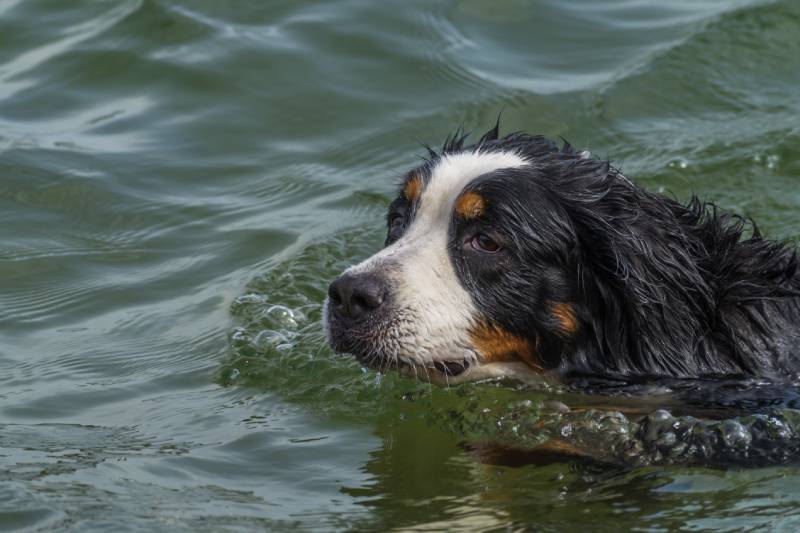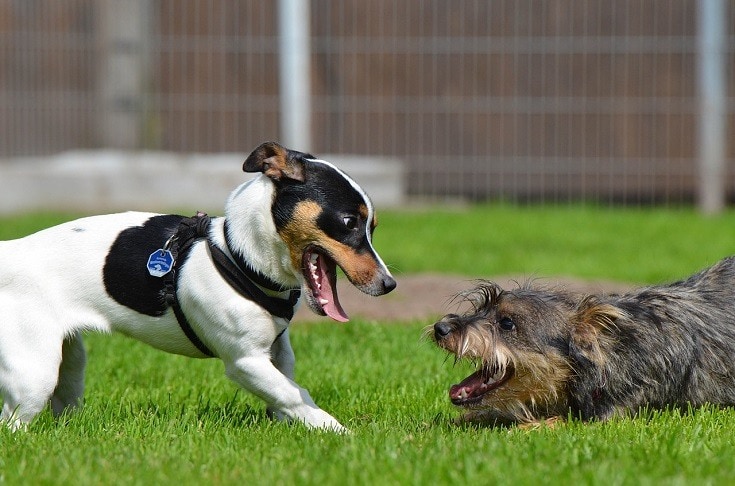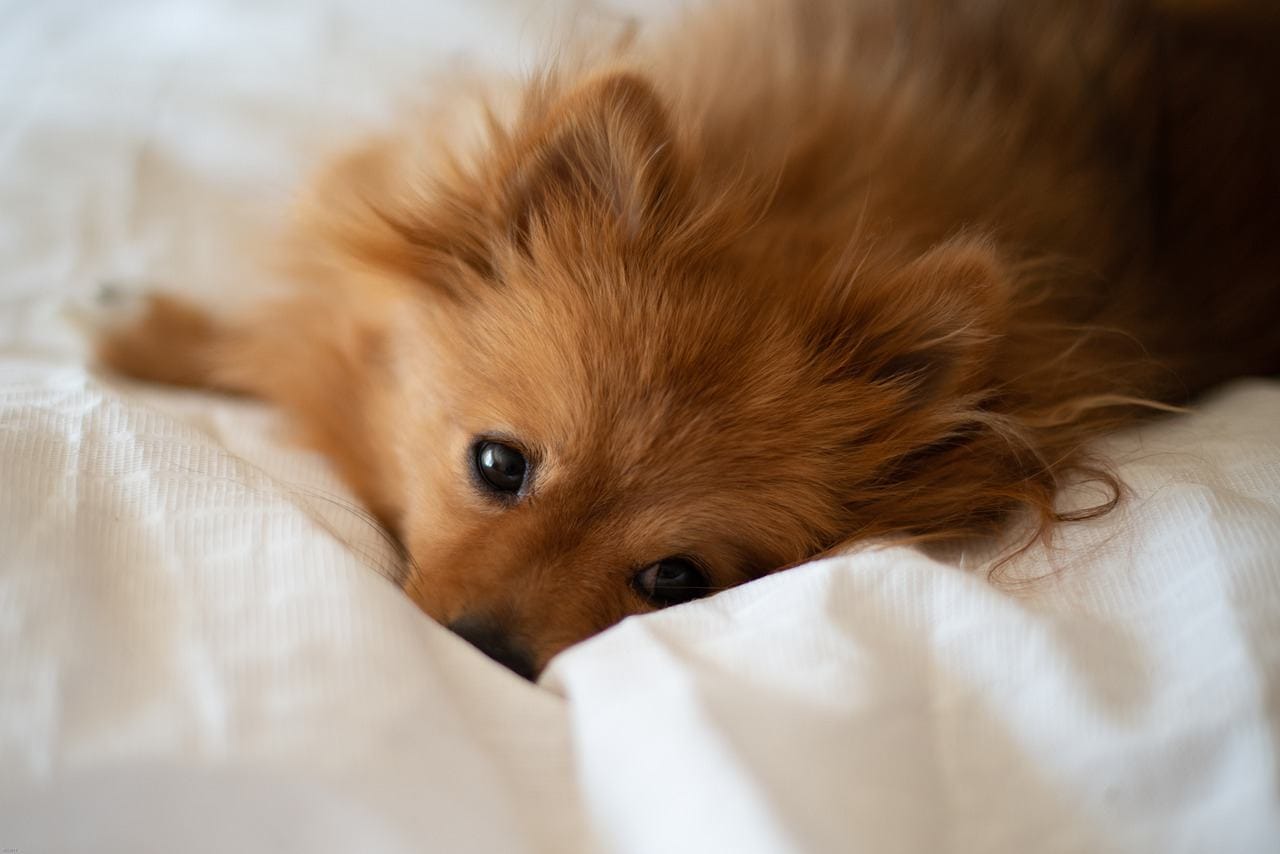How Much Do Pugs Shed? Breed Health & Grooming Tips
Updated on
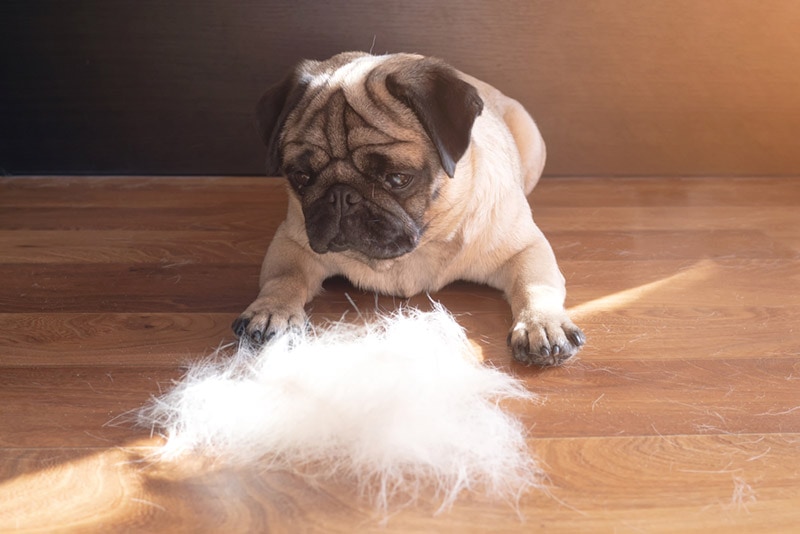
The beloved Pug is a companion many dog lovers dream of making part of their family. These little dogs are comical, even-tempered companions that love spending time with their owners. While a Pug could be a dream come true pet companion for many, that doesn’t mean certain questions don’t spring to mind when the opportunity to bring home one of these pups arises.
Of those questions, and one of the most common, is how much do Pugs shed? The answer to that question is quite a bit, which deceives many Pug lovers. They may look cute and cuddly, but you better be prepared to open your home, yourself, and your clothes to a bit of sticky fur when a Pug becomes your new best friend.
Let’s learn more about Pugs, their coats, and why they shed so much. We’ll even give you a few tips to help control this issue so your cute furball doesn’t leave you covered in too much hair.
Did You Know Pugs Are Double-Coated?
If you’re a dog lover, you’ve most likely heard about double-coated breeds and how much they shed. Huskies and German Shepherds are examples of dogs with this type of coat. Double coats are used to help regulate your dog’s temperature throughout the season and protect them from the elements. The top coat is made up of longer, coarser hair. The undercoat is much softer and grows independently of the top coat. While the top coat is longer, the undercoat grows more rapidly.
Pugs shed a moderate amount all year round thanks to their top coat. Twice a year, normally in the spring and fall, double-coated dog breeds go through a process known as “blowing their coat”. This is when the lush undercoat is shed. When this takes place, you’ll find that your Pug is losing handfuls of hair at a time. There’s no cause for concern, however. They are merely making room for their new thicker coat for wintertime or thinner undercoat for the summer months.
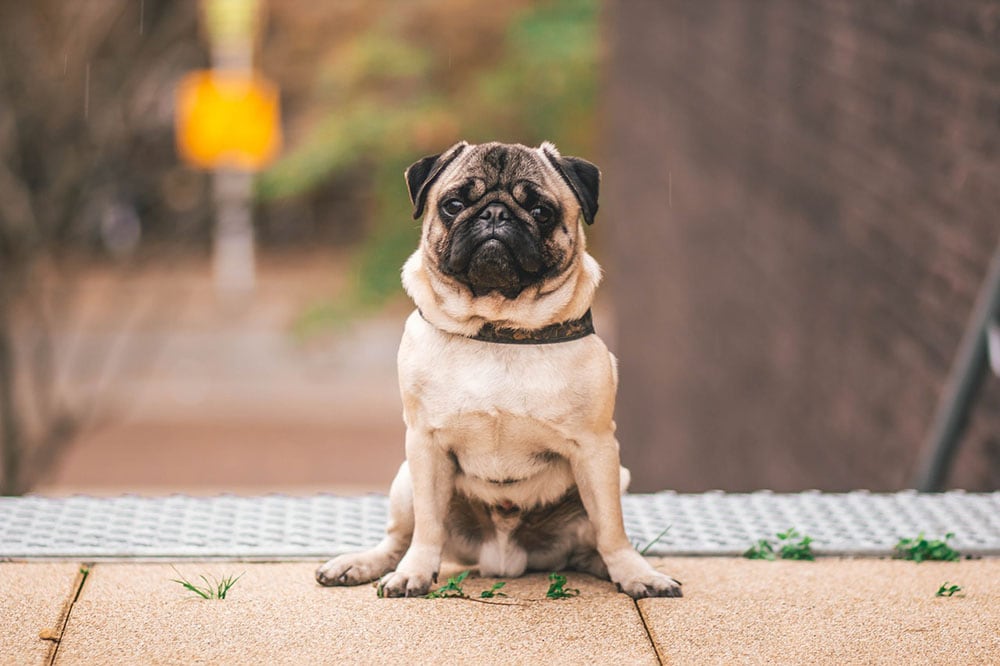
Are All Pugs Double-Coated?
There are Pugs out there that aren’t double-coated. In most instances, you’ll find that Pugs come in several colors. This includes fawn, apricot, black, and silver fawn. Oddly enough, Pugs that are fawn, silver fawn, or apricot are usually the ones with a double coat. This means they are heavier shedders. Pugs with a single coat are most often black.
What does this mean for those dreaming of owning a Pug? If you’re worried about the amount of shedding or have allergies that could become an issue thanks to a double coat, trying to make a black Pug part of the family could be your best option. Don’t be misled, however. Black Pugs still shed, just not as much as their double-coated counterparts. Black Pugs are also rarer than fawn-colored Pugs so finding one may take a bit of time.
The 5 Reasons Your Pug Is Shedding More Than Normal
If you have a Pug in your home, you’re most likely used to the hair on basically everything. However, there can be instances when your Pug will shed more than normal. Some things can trigger excessive shedding in a Pug.
1. Age
We’ve already mentioned the seasons when it comes to shedding, but age is also a factor. When you first bring a Pug pup home, you may not notice a lot of shedding. This is normal. When a Pug reaches 12 to 18 months of age, the amount they shed will increase unless, of course, they are a black Pug with a single coat.
2. Heat Cycles
Female Pugs who haven’t been spayed may shed a bit more when they are at the end of their heat cycle. This happens due to their hormone levels and how they fluctuate so much during this time.
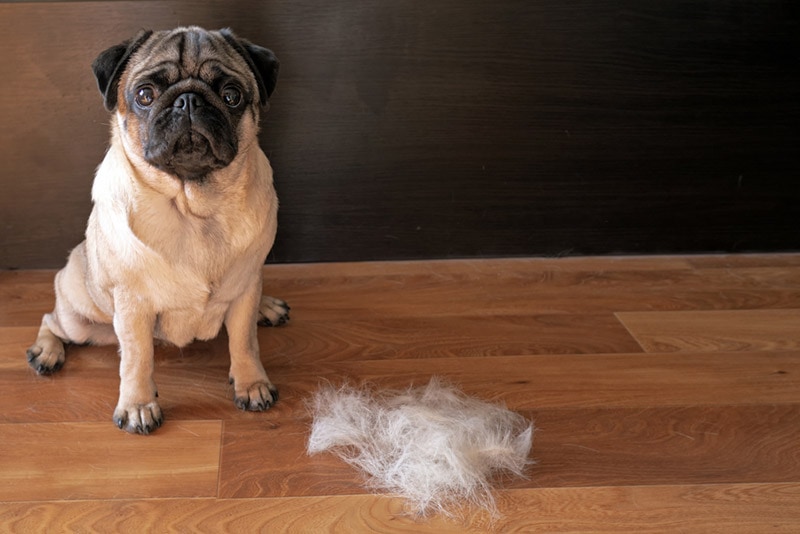
3. Allergies
If your Pug is shedding more than normal, allergies could be the culprit. This breed is prone to skin allergies. If you notice your Pug is shedding a lot and see signs of dry or irritated skin, you may need a visit to the veterinarian for a proper diagnosis.
4. Stress
Pugs are highly sensitive dogs. If your fur baby begins shedding more than normal, it could be stressed. To determine whether this is the issue, take a close look at your Pug’s routine. Has something changed? Did the family move? Has a new pet come into the home? There are lots of factors that could stress your Pug out. If this is the case, your pooch may need time to adjust before shedding levels go back to normal.
5. Proper Diet
A healthy diet is critical when it comes to controlling your Pug’s shedding. When eating a nutritious, well-balanced diet, a Pug’s shedding should be moderate and normal. If you don’t feel this is the case, perhaps it’s time to choose a higher-quality kibble rich in omega fatty acids or speak with your veterinarian about suggestions.
Grooming Is Crucial
Don’t get discouraged when it comes to your Pug’s shedding. While you may want to wrap your furniture in plastic, it’s not necessary. Nothing will completely stop your pet from shedding, but a good grooming routine is crucial to keeping things under control. Let’s take a look at a few tips to help provide a successful grooming session for your Pug.
The Right Tools
There are tons of brushes and deshedding tools on the market. You may think grabbing one is the answer to your pet’s grooming needs, but that isn’t the case. In all honesty, Pugs need slicker brushes, bristle brushes, and deshedding tools to truly keep their coat looking great and help control their shedding.
Slicker brushes are ideal for everyday maintenance and work well to remove dirt and hair from your Pug’s undercoat. Bristle brushes spread your Pug’s natural oils to help moisturize their skin and keep them looking their best. Deshedding tools can be harsh on your Pug’s skin and should only be used once a month or so for big grooming jobs. This tool is often best used when a Pug is blowing their coat.

Bath Time
Pugs shouldn’t be bathed too often. This can remove their natural oils and leave their skin dry. Instead, sticking to a schedule of bathing every 3 to 4 weeks, unless your pup gets into something, is best for your dog. When bathtime rolls around, make sure you are using shampoo and conditioner that is safe for your Pug’s skin and coat. Avoid heavy perfumes, dyes, and additives. Give your Pug a good scrubbing during bathtime to ensure you’re removing loose hair and dead follicles. This will help keep hair off your clothes and prevent it throughout the house.
There are a lot of pet shampoos on the market, but not all of them will keep your pet's skin and coat happy and healthy. The Hepper Pet Shampoo products are pH balanced and made with natural, safe ingredients like soothing oatmeal and aloe vera. Our shampoos will keep your pet clean, smelling fresh, and fully moisturized! The hardest part is deciding whether to get to traditional shampoo or the rinse-free version! Here’s a quick guide to help you choose the right option for your pet’s next bath!
Hepper Colloidal Oatmeal Pet Shampoo
Hepper Waterless No Rinse Pet Shampoo
Natural cucumber & aloe scent
Safe for cats & dogs
Rinsing required
Free of harsh chemicals & nasty ingredients
Lathers easily
Conclusion
If you’re a true dog lover, a bit of hair isn’t going to scare you. However, if you’re planning on bringing a Pug into your home, you should be prepared. Don’t be under the illusion that these little dogs won’t leave their mark on you. Not only will they give you their heart, but they will also share lots of hair for you to take everywhere you go.
Featured Image Credit: Yekatseryna Netuk, Shutterstock






